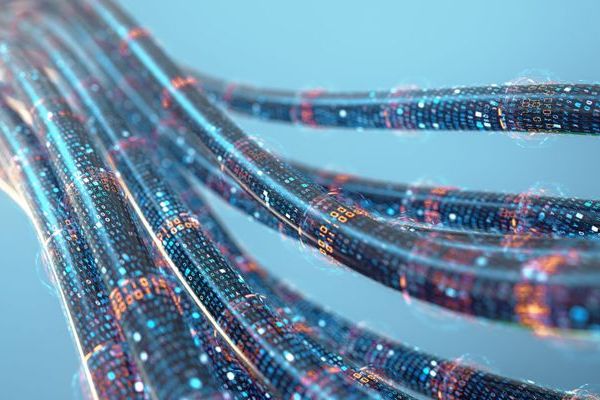The Role of Positioning, Navigation, Timing and Other Technologies in Electronic Warfare
Positioning, Navigation and Timing (PNT) are critical components of modern technology. From the Global Navigation Satellite Systems (GNSS) to other terrestrial systems such as Dead reckoning and the revival of e-Loran and the emerging use of SoOp to quantum PNT, PNT is applied to every aspect of our life from route planning to precise timing for financial transactions and telecommunications, to emergency services and defence.
As this decade was marked by evolving and diversifying threats with great powers contributing to compete and impose supremacy in weapon innovation, Precise positioning and timing are the heart of any battalion, air or sea missions. However, PNT is not all a happy story of supremacy. Malicious interference from adversaries, such as jamming or spoofing techniques, has been widely used. Russia is coming up with a fiber-optic drone to avoid such scenarios, allowing high-resolution video signals to be transmitted without relying on radio frequencies. This emphasises the race to achieve PNT resilience; by incorporating multiple layers of redundancy, including alternative satellite constellations and ground-based navigation aids. Signals of Opportunity (SoOP) can provide accurate positioning information in environments where traditional GNSS can be compromised or unavailable. They leverage existing frequency signals not originally designed for navigation (Wi-Fi, cellular, TV, or radio signals) that are used with a receiver to determine positioning.
Hence comes the promise of Low Earth Orbit constellations with their newly designed signal to help create these layers of redundancy and system of systems to avoid single points of failures and to offer a dual-use platform communication and PNT. On the other hand, attackers use signal detection and tracking to detect, analyse, and track enemy communications or movements, enabling them to locate and jam enemy forces by leveraging (SoOP)s. This can be easily achieved these days, with smartphones traditionally being considered unsuitable for military purposes due to concerns about ruggedness and their inability to meet military-grade requirements. Recent shifts in requirements, driven by increased demand and profitable opportunities, have led the industry to produce mil-spec phones. These specialised devices feature advanced capabilities such as built-in thermal heat cameras, laser range finders, SOS beacons, encryption integrated into the phone's software, improved signal reception, and AI-guided receivers. A noteworthy illustration of this transformation is evident in the Nett Warrior Program of the US.
Mil-spec phones, integral to this program, enhance Situational Awareness (SA) for commanders, enabling faster and more accurate tactical decisions. The technology integrates navigation, Situational Awareness, and information-sharing capabilities, providing a digital display of the commander's location on a geo-referenced map. Interoperability and radio capabilities play a crucial role in connecting the dismounted commander to the network. The digitization of modern battlefields emphasizes the pivotal role of these devices in the "last 100 yards of the battlefield." Soldiers depend on these devices not only during conflicts but also in post-conflict, peacekeeping, and counterinsurgency operations. Programs like the French Army's FELIN and the Centurion initiative highlight the significance of advanced soldier systems. Advancements in soldier equipment, demonstrated by the Next Generation Squad Weapon (NGSW) program, Soldier Protection System (SPS), and the ENVG-B developed programs, showcase continuous progress in enhancing battlefield visibility that heavily relies on PNT.
The Space Attack, Research and Tactic Analysis (SPARTA) underscores the vulnerability of space systems, identifying 83 techniques for attacking constellations or spacecraft through cyber and traditional counter-space means. These techniques encompass activities like gathering supply chain or mission intelligence to spoofing, maliciously jamming code, and compromising ground capabilities.
Recognising the vulnerability of GPS, China is revitalising its e-Loran, integrating space, fiber, and terrestrial broadcasts to ensure comprehensive and resilient Positioning, Navigation, and Timing (PNT). With a delivery time of 100 ns or better, China guarantees service despite weather, cyber, or physical attacks. This strategy positions China ahead of the U.S. and Europe in PNT resilience and reliability, crucial for Critical National Infrastructure (CNI) and a robust digital economy, calling for immediate actions for allies on the western continent.
In this era, a comprehensive space PNT plan is incomplete without integrating Artificial Intelligence (AI) and Machine Learning (ML). Software-based solutions, including cloud-based PNT services and ML algorithms, enhance accuracy and efficiency. ML is employed to detect patterns indicating jamming attacks in PNT data, offering real-time alerts. AI applications extend to defense, including optimized spectrum monitoring networks and monitoring UAV passages for enhanced security.
The race for spectrum dominance has historically favored the United States, with successes in this domain. However, the Iraq war highlighted the challenges associated with this supremacy, particularly in proxy wars. Engaging with host nations, coalitions, or joint forces introduces difficulties related to the interoperability and compatibility of command and control, weapon systems, and EW capabilities for both air and ground forces. The issue of a congested and contested spectrum extends beyond warfare; it becomes a strategic challenge in aligning interests and alliances to secure international supremacy. The spectrum is utilised by diverse entities such as telecom providers, defense forces, first responders, and the broader digital society.
On the data side, advancements have been made in developing networks and devices for frontline personnel to receive data, insights, and software apps. The challenge lies in effectively analysing vast volumes of data collected from space, air, land, and sea during conflicts, empowering warfighters without overwhelming them.
In conclusion, the evolving landscape of modern conflicts reflects a dynamic interplay between technological advancements, geopolitical strategies, and the shifting nature of warfare. In this landscape, Electronic Warfare (EW) supremacy emerges as a decisive factor, allowing parties to dominate their adversaries tactically and strategically which extends beyond traditional warfare boundaries, influencing diplomatic relations, public opinion, and international security efforts. A democratic, human-centric perspective is crucial amid power imbalances and ideological differences. The future of cyber strategy and operations is a multidimensional chessboard, requiring continuous adaptation, international cooperation, and ethical stewardship to create a secure global environment.
References
-
The Resilient PNT Foundation

techUK - Breakthroughs in Satellite Connectivity
techUK’s Breakthroughs in Satellite Connectivity campaign is our showcase of the opportunities and benefits created by the latest advances in satellite technology.
During this campaign, techUK will run a regular drumbeat of activity, including videos, reports, and insights, to demonstrate some of the most exciting satellite innovations.
Visit our Campaign Week hub to learn more, or find our latest activity below.
Upcoming digital connectivity events:
Latest news and insights
Telecoms updates
Sign-up to get the latest updates and opportunities from our Communications Infrastructure and Services programme.
Contact the team
Sophie Greaves
Sophie Greaves is Associate Director for Digital Infrastructure at techUK, overseeing the Telecoms Programme, the Data Centres Programme, and the UK Spectrum Policy Forum.

Tales Gaspar
Tales has a background in law and economics, with previous experience in the regulation of new technologies and infrastructure.

Josh Turpin
Josh joined techUK as a Programme Manager for Telecoms and Net Zero in August 2024.









